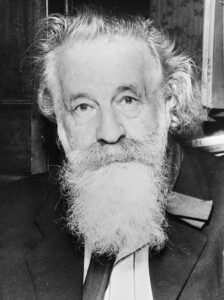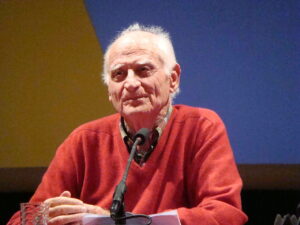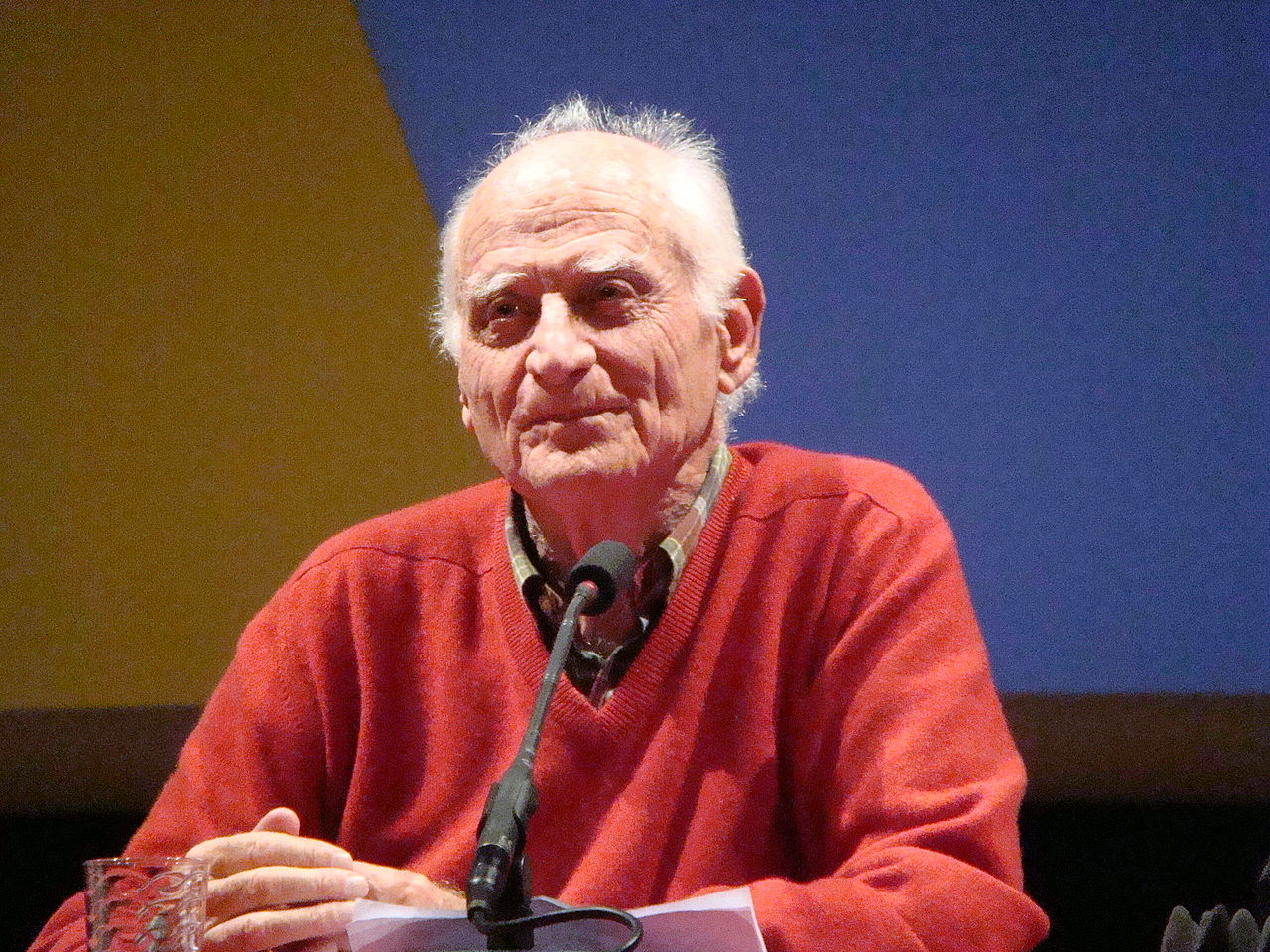Bloomsbury is publishing a series of books about the philosophy of Michel Serres (1930-2019). This is the third. The first two are Michel Serres and the Crises of the Contemporary; and Mathematics and Information in the Philosophy of Michel Serres. The author of the title under review is Dr. Massimiliano Simons, at the Sarton Centre for History of Science at Ghent University, Belgium.
Few books are brilliantly written and, at the same time, important in their own right. This is one of those rarities.
“Many of Serres’ books,” writes Simons, “can be seen as a quarry where old petrified stories and metaphors are excavated, examined and sent off in new directions.” With this as a touchstone of sorts, the reader is sent on a voyage of discovery. I recommend bringing hearty provisions, and, for those who drink, several bottles of scotch. While there is much food for thought here, it may not all be to your taste.
In a book about science, I was surprised the word “quantum” does not appear in the index, as in “quantum mechanics,” a term that is used six times in the text. Simons devotes much of the book to relating the work of Serres to other French philosophers, notably Gaston Bachelard (1884-1962), who was engaged with quantum mechanics. Writing in 1934, Bachelard stated “objects only have reality in their relationships,” but Simons does not give us this crucial passage that predates all others in his discussion. Simons does engage with ‘relational ontology’ without imparting to the reader the essential importance of it. In the work of Serres’ contemporary Bruno Latour (1947-2022), Simons writes “Scientific practices precisely aim to construct new and artificial relations with phenomena,” the key word here being relations. “Latour derives the relational ontology needed for his views from Serres, who similarly sees scientific practices as specific formations of relations.”
Helpfully, Simons offers a large quote from Serres, which he also comments on. In 1985, Serres linked his model on the formation of relations “with the metaphor of the maze: rather than seeing mazes as unnecessary diversions, a maze can be productive precisely by introducing more interventions. Such ‘distortions’ enable one to detect more, to know more. Rather than letting all phenomena through without distinction, a maze can differentiate between phenomena by narrowing and slowing them down, allowing the observer to become aware of new, subtle differences.” Solving the problem of a ‘quantum maze’ is a real one in the laboratory, and physicists regularly slow down particles (by using magnetism or cold temps) to discover subtle aspects of reality.
In a 1983 interview (not included in the book; see link below), Serres said “What’s remarkable in Bachelard is a very strong rupture between scientific thought, on the one hand, and poetic thought, on the other. Consequently, I’ve worked my entire life to remove that rupture, to show that one single voice can speak about the elements both scientifically and poetically.”
Much of the book by Simons is devoted to an ‘philosophical autopsy’ of the differences between Serres and Bachelard. “One starting point is a text from 1970, ‘Reform and the Seven Sins’, in which Serres gives a critical reading of Bachelard’s 1938 book;” it translates into English as The Formation of the Scientific Mind. (From 1929 to 1962 Bachelard authored 23 books addressing his dual concerns, the philosophy of science and the analysis of the imagination of matter; it is a great pity that many are still locked away in French only. There is a Texas connexion here: In 1981 Joanne H. Stroud of The Dallas Institute of Humanities and Culture contracted with José Corti to publish in English the untranslated works of Bachelard on the imagination. There is a link below).

In his 1938 book, Bachelard focuses on the concept of formation. “However,” Simons tells us, “one science is nonetheless missing: physics. Formation makes no sense as a concept in his physics.” While Bachelard ignores physics, “His successors are only concerned with either formal sciences or biological and socio-political sciences. By forgetting physics they forget the role of the object.” This is a somewhat difficult but key point. Serres wrote in 1970 “The concrete object removed, idealism remains, well hidden. Our philosophical times are marked by the disappearance of the object.” Simons identifies for us the importance of this: “It is in this lacuna that Serres will place his own philosophy, inspired by information theory.” In 1974, Serres wrote that “the theory of information has constituted a philosophy of physics, intrinsic to the discipline itself.” It was quite prescient that even in the 1970s, before anyone had home computers or cell phones, Serres recognized information as key; with the internet, we are now living in the information age.
In a section on Bachelard and the scientific self, Simons says his work “is characterised by a specific form of presentism: a rereading of the history of science through present science.” Serres and Michel Foucault (1926-1984) “argue that Bachelard’s main concern is not historiography, but the formation of the scientific spirit. The question is not to understand the history of science per se, but to achieve an aesthetics of the intellect, as Bachelard wrote in 1938.” Thus, Simons concludes that, for their view of Bachelard, “History of science is merely a concern because it can teach us a lesson about how the mind progresses and transforms itself.” This leads directly into how history of science is taught in schools.
Simons positions French epistemology as quite different from that promulgated by Thomas Kuhn. Essentially, the French philosophers view the way science is being taught as incorrect. “Students get the wrong impression that the scientific way of thinking is self-evident. The dominant pedagogy thus leads them to a naïve form of empiricism. The problem with history of science is thus a false image of simplicity, ignoring the struggles and reforms the mind has to go through to make sense of novel scientific phenomena.” Quoting Bachelard from 1949: “The history of science is often misleading in this regard. It almost never restores the obscurities of thought. It cannot therefore fully grasp rationality in the making.” For me, this discussion (in chapter 3) is the most important in Simons’ book. Much more could be written, but as Simons cautions, “my concern is not about an interpretation of the actual practices of scientists, but rather about the philosophies of science of individual philosophers.”
Another fascinating chapter is entitled Brewers of Time. For those who regard time as smooth and linear, the view of Serres is unsettling. I give here just one quote from Simons as he discusses a 2003 work by Serres (he published 73 books from 1968 to 2019). “Time is structured chaotically, in the sense that it can always unpredictably branch off in totally novel ways. Only retrospectively does it gain the impression of being determined.” Quoting from Serres directly: “Unpredictable when it advances, it becomes deterministic when one turns around. Like every narrative, this one, the greatest and most truthful of all, unfurls the contingent time of chaos.” As a definition of time, I have not seen a better one.
In this book of extraordinary depth, even the author admits his subject is difficult. “Serres’ work is challenging to summarise or his influence is hard to pinpoint, because his philosophical interventions often situate themselves on an invisible, angelic plane.” For anyone who wants to converse with the angels, this book is for you.
There is a typo on page 175: “highlight to how” should read “highlight how”
Michel Serres and French Philosophy of Science is by Bloomsbury. It lists for $103.50.
Lead Image: Michel Serres in 2011. This file is licensed under the Creative Commons Attribution-Share Alike 3.0 Unported license.
Second image: Gaston Bachelard. This file is licensed under the Creative Commons Attribution-Share Alike 3.0 Netherlands license
The text of an interview (conducted by Paul Galvez) in 2013 with Serres can be found at this link:
https://www.artforum.com/print/201307/michel-serres-interviewed-by-paul-galvez-42638
For the translations of 8 books by Bachelard, go to this link at the Dallas Institute
https://dallasinstitute.org/bachelard/

